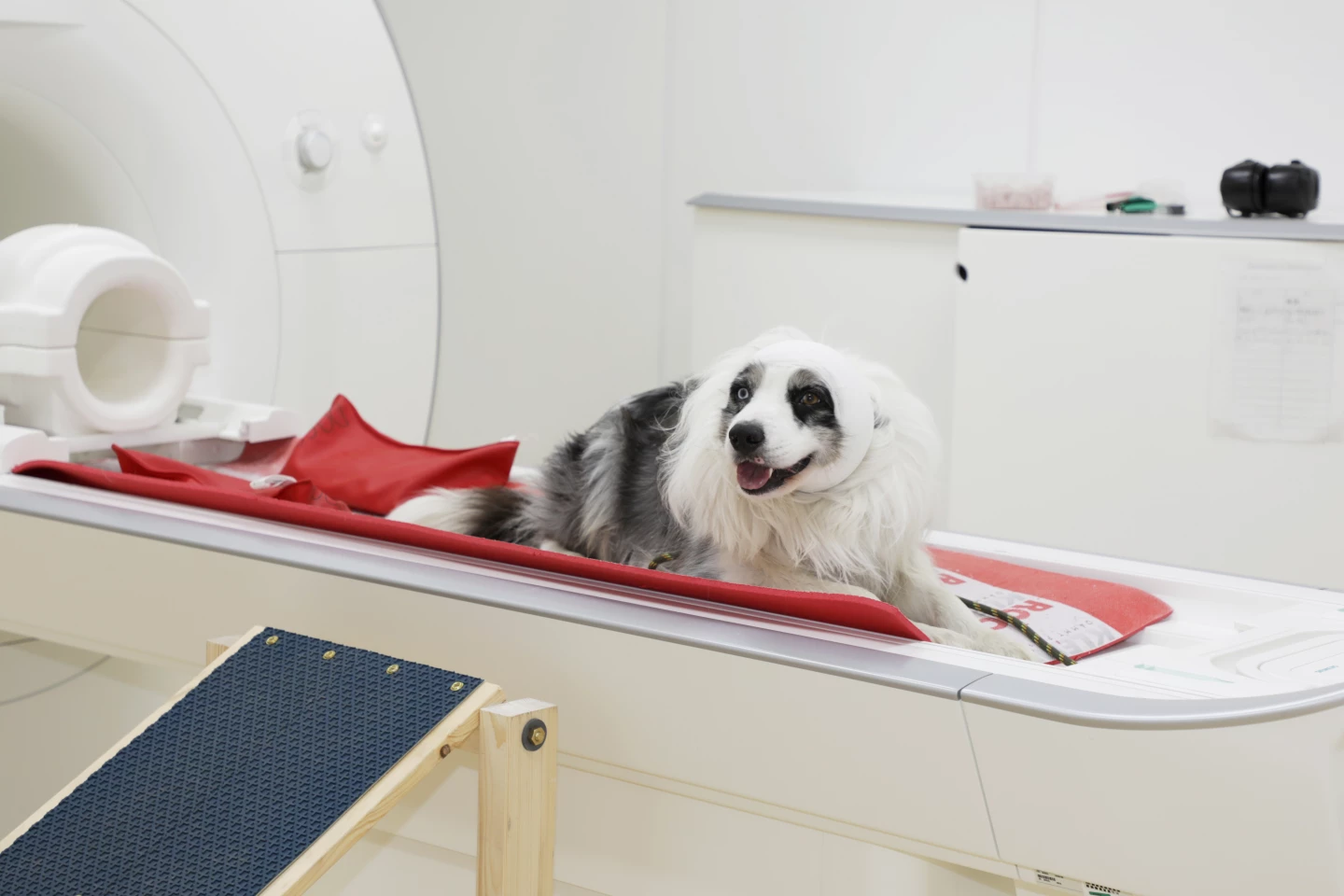Reading someone’s facial expressions or body posture is important for understanding their personality, emotions, motivations, or intent. But what about dogs? Can they draw information from faces and bodies like we do? A new study has provided the answer.
Previous research has determined that an area of our brains – the temporal lobe – is dedicated to perceiving others and that adjacent areas specialize in interpreting faces and bodies. The same is true of primates. However, research on how other animals differentiate between faces and the emotional cues they provide is scarce.
Now, researchers from the University of Vienna have studied humankind’s long-term companion, dogs, to see whether evolution has allowed their brains to perceive faces and bodies like we do.
“Whether this behavioral expertise is also reflected in the dog brain was the content of our study,” said lead author Magdalena Boch.
Fifteen awake, unrestrained pet dogs and 40 human participants underwent functional magnetic resonance imaging (fMRI) scans while they were shown pictures of human and dog faces, human and dog bodies, and everyday inanimate objects such as toys or chairs. To improve the study’s validity, the face and body images showed a variety of postures (e.g., jumping, looking up), neutral and positive emotions (e.g., sleeping, smiling), and different perspectives (e.g., from above, from the side). Scrambled versions of the pictures were also shown to the participants, acting as a visual control.
Over two five-minute runs, human and canine participants were shown 180 different images. The dogs had been given extensive training to stay motionless during the MRI without restraints or sedation, and they could leave the scanner at any time. Their heads were bandaged to secure the noise-protecting earplugs they wore during the procedure.

Analyzing the scanned images to see how dogs’ brains responded to the images they were shown, the researchers found the first evidence that, like humans, dogs possess a region in the temporal lobe that specializes in visually perceiving body postures. They also found three other regions in the dog brain with a preference for perceiving faces and bodies compared to inanimate objects.
“We humans often focus on the face when communicating with others,” Boch said. “Our results suggest that faces are also an important source of information for dogs. However, body postures and holistic perception seem to play a superior role.”
However, instead of affecting brain regions associated with vision, which happens in humans, the researchers found that when dogs look at faces and bodies, the parts of their brains responsible for processing smells are activated. The researchers say this finding reflects dogs’ high smell sensitivity and the interplay between smell and vision to infer social and contextual information.
The specialized brain regions seen in the dogs' brains were equally active regardless of whether they were looking at humans or other dogs. This, say the researchers, reflects our long relationship with our furry friends.
“Dogs and humans may not be closely related, but they have been close companions for thousands of years,” said Claus Lamm, one of the study’s co-authors. “Therefore, comparing dogs and humans also gives us new insights into the so-called convergent evolution of social perception and information processing processes.”
Convergent evolution is the process by which unrelated species occupying a similar habitat evolve independently to exhibit common physical traits.
The researchers say their study marks the first step toward comparing how human and dog brains perceive faces and bodies and that further research is needed to provide a greater understanding of the mechanisms underlying perception.
The study was published in the journal Communications Biology.
Source: University of Vienna






